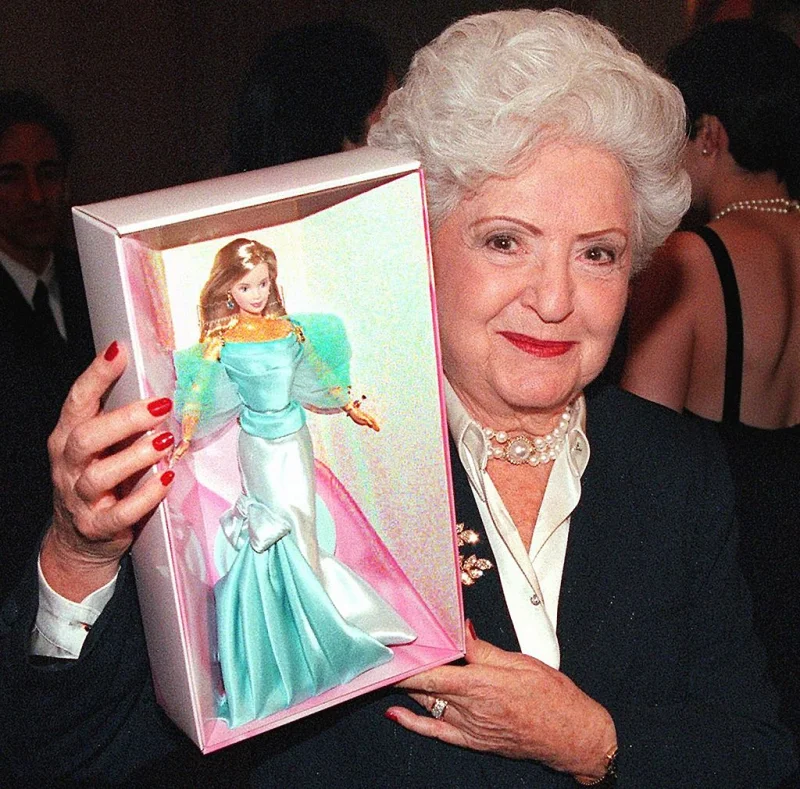As Greta Gerwig delves into the creation of a seemingly personality-less doll in her latest project, the Barbie film, she finds inspiration in Barbie’s history. Mattel, the parent company of Barbie, took Gerwig through an immersive experience or “Barbie bootcamp,” providing a comprehensive overview of the iconic doll’s journey since its debut at the 1959 Toy Fair in New York City. Now, with over a billion dolls sold worldwide, Barbie remains one of the most recognizable toys in history.
For Gerwig, the heart of the Barbie story lies in the relationship between Barbie’s inventor, Ruth Handler, and her daughter, Barbara, for whom the doll is named. During a recent interview, Gerwig emphasized that the essence of a Barbie movie would inherently be a mother-daughter narrative due to the significance of Ruth Handler and Barbara’s bond.
Ruth Handler played a pivotal role in revolutionizing the toy industry when she introduced a mainstream doll with the proportions of an adult woman. Prior to Barbie’s creation, girls primarily played with baby dolls, reinforcing the societal notion of conditioning them to become mothers in the future. Handler had a groundbreaking idea in the early 1950s: introducing dolls modeled after adult women to encourage girls to envision their potential future roles. Inspired by her daughter Barbara’s play with paper dolls, Handler decided to name her innovative creation “Barbie,” after her daughter.
Before Barbie’s introduction, Handler faced resistance from Mattel’s executives, who argued that no mother would purchase a doll with adult-like features, including breasts. However, Handler’s determination persisted. Her breakthrough came in 1956 when she stumbled upon a German doll called Bild Lilli during a trip to Europe. The doll was based on a pin-up comic strip character, featuring voluptuous proportions, and had been designed as a World War II souvenir for soldiers. Handler brought one of these dolls back to the U.S. to demonstrate to Mattel’s designers the potential success of a similar creation.
The grand debut of Barbie occurred at the 1959 Toy Fair in New York City, dressed in the now-iconic black-and-white striped bathing suit, akin to what Margot Robbie‘s character wears in the opening scenes of the upcoming Barbie film. The fashion doll instantly captured the hearts of children worldwide, propelling Mattel to extraordinary success. Responding to popular demand, Ken, Barbie’s boyfriend, was introduced in 1961. Over time, Barbie evolved from merely a fashion doll into a representation of various professions, encouraging girls to explore diverse career aspirations.
Author M.G. Lord described Barbie as an iconic figure in American culture, symbolizing the epitome of femininity upon which little girls project their idealized selves. For many baby boomers, Barbie holds the same iconic significance as female saints, albeit without religious connotations.
Despite her achievements, Ruth Handler’s life was not without complexity. In 1978, she, along with other Mattel executives, faced indictment by a federal grand jury for conspiracy, mail fraud, and providing false financial statements to the Securities and Exchange Commission. Handler pleaded no contest, resulting in a fine of $57,000 and 2,500 hours of community service.
READ MORE: Ariana Grande Finds Love with ‘Wicked’ Co-Star Ethan Slater Following Marriage Split
In the 1980s, Handler found success in a completely different venture. During the Barbie film, Handler’s character refers to her experience with breast cancer, a battle she personally fought. Witnessing the need for life-like prostheses for women, Handler created a company called Nearly Me. The company, led by a team of breast cancer survivors, designed and sold prostheses tailored to women’s needs. Handler even personally fitted First Lady Betty Ford with a prosthesis after her mastectomy. She eventually sold the company to Kimberly-Clark in the 1990s.
In the Barbie movie, Ruth Handler is portrayed as a spiritual figure. She appears mysteriously in a retro kitchen within Mattel headquarters, offering comfort to Barbie during moments of existential crisis. Handler helps Barbie escape the clutches of corporate interests seeking to confine her back into a box, signifying an aspiration for freedom and self-discovery. Their connection is more profound than Barbie initially realizes, ultimately leading to a transformative conversation about embracing humanity, confronting mortality, and transitioning from a utopian Barbie Land to the real world.
Gerwig shared that Ruth and Barbie touch hands twice in the film, a gesture reminiscent of Michelangelo’s fresco in the Sistine Chapel where God imparts life to the first man. In this portrayal, Ruth, akin to a deity, bestows life not upon a man but upon a woman—specifically, a doll who has long represented society’s ideals of womanhood, for better or worse.
As the Barbie movie explores these intricate dimensions of Ruth Handler, it leaves audiences with the revelation that God, at least in the world of Barbie, is a woman, and one with a deeply multifaceted existence.
